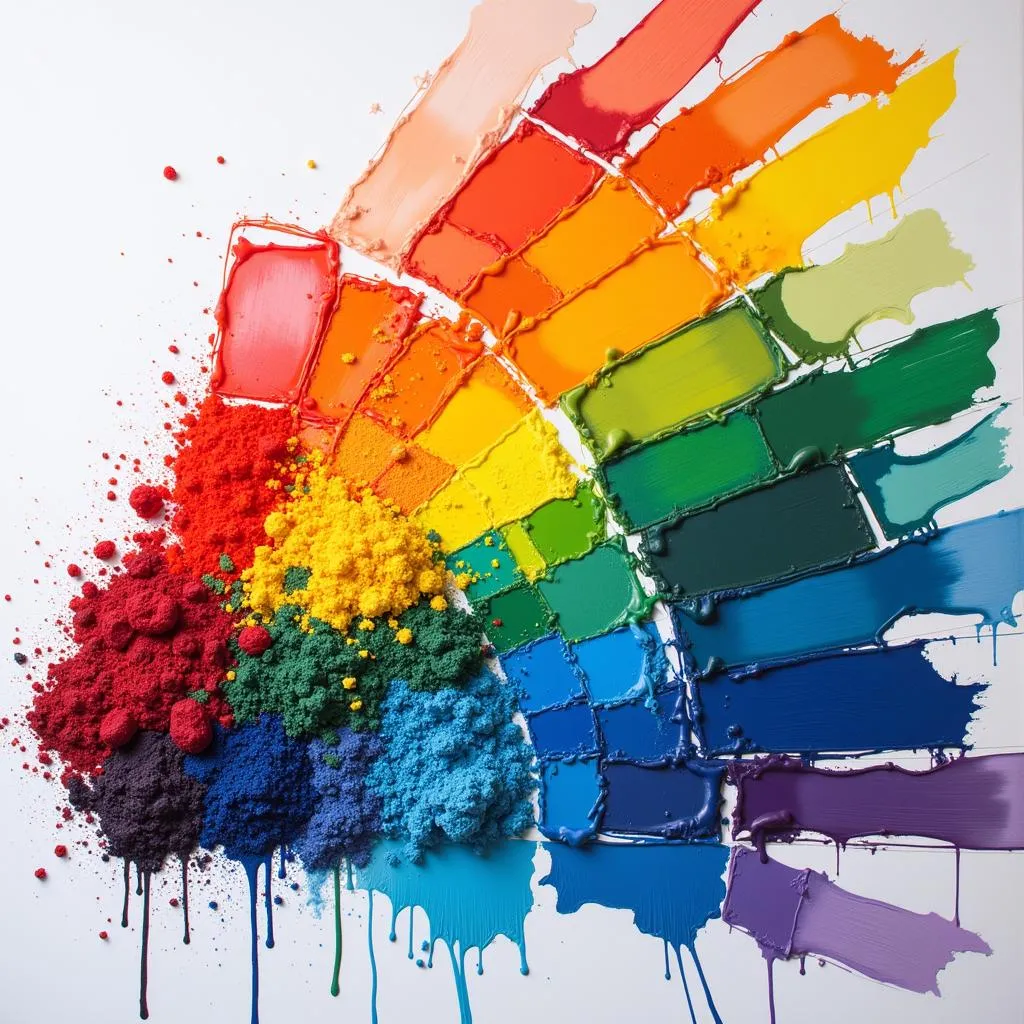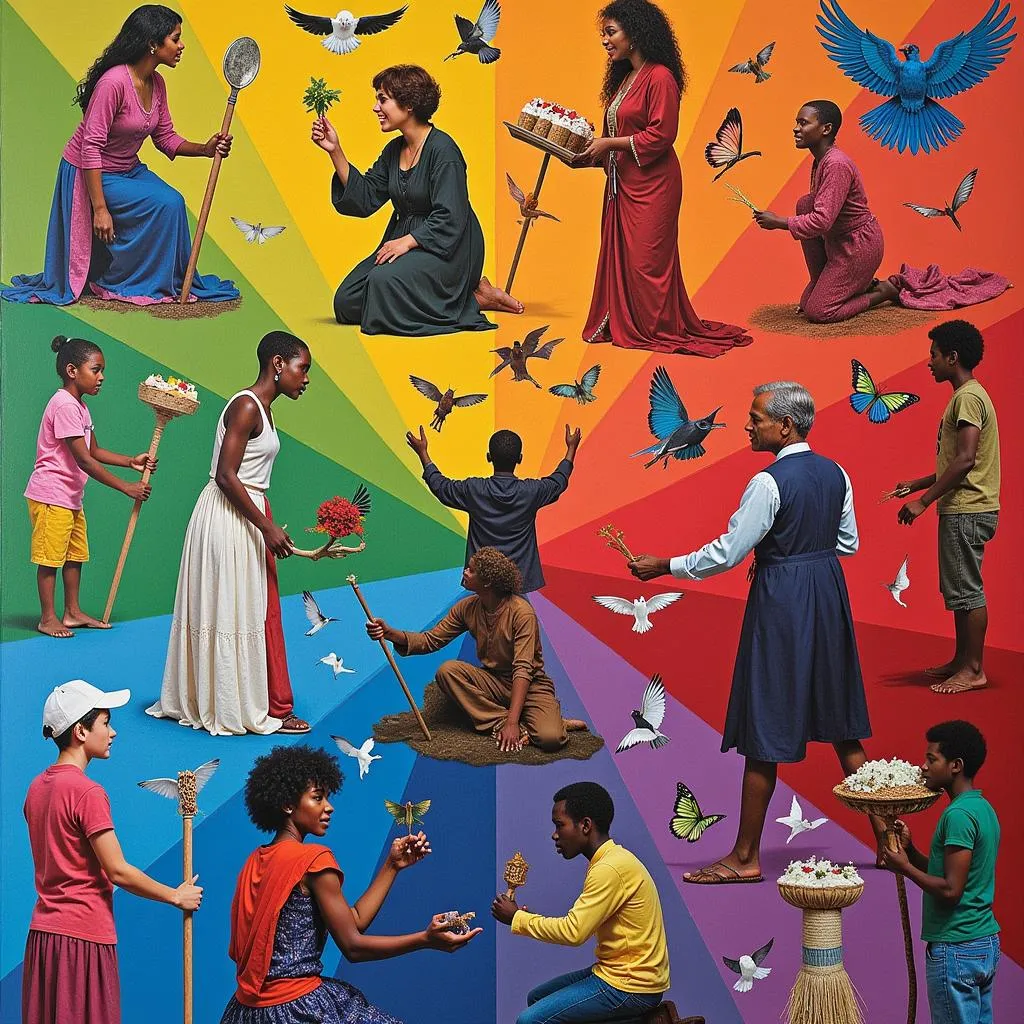The question of the most beautiful color in the world, or “cuál es el color más bonito del mundo,” is subjective and has no definitive answer. While personal preferences play a significant role, cultural influences, psychological associations, and even biological factors contribute to our individual color perceptions and preferences.
 Color Spectrum Representing Diverse Hues
Color Spectrum Representing Diverse Hues
The Subjectivity of Beauty and Color Perception
Our perception of color is influenced by a complex interplay of factors, including the physiology of our eyes, the way our brains process visual information, and our personal experiences and associations. What one person finds beautiful and appealing, another might perceive as dull or even unpleasant.
For example, some individuals might gravitate towards warm colors like red and orange, associating them with passion, energy, and excitement. Others might find solace and tranquility in cool colors like blue and green, linking them to nature, serenity, and peace.
 Diverse Cultural Representations of Color Symbolism
Diverse Cultural Representations of Color Symbolism
Cultural and Societal Impacts on Color Preference
Cultural backgrounds significantly influence color associations and preferences. Colors often carry symbolic meanings that vary across different cultures and societies. For instance, white is frequently associated with purity and innocence in Western cultures, while in some Eastern cultures, it symbolizes mourning and loss.
Understanding these cultural nuances is crucial, especially in fields like marketing and design, where color choices can significantly impact the perception and reception of products, brands, and messages.
Psychological Effects of Color and Their Influence on Our Choices
Colors possess a powerful ability to evoke emotions and influence our moods and behaviors. This psychological impact stems from our learned associations and the intrinsic properties of colors themselves. Warm colors tend to be stimulating and energizing, while cool colors often have a calming and relaxing effect.
 Examples of Interior Design Utilizing Color Psychology
Examples of Interior Design Utilizing Color Psychology
Exploring the World’s “Favorite” Colors
While a universally agreed-upon “most beautiful color” remains elusive, studies and surveys have explored global color preferences. Blue consistently ranks high in popularity across cultures, often associated with trustworthiness, peace, and stability. Green, symbolizing nature, growth, and harmony, also enjoys widespread appeal.
The Beauty of Color Lies in Its Diversity and Individuality
Ultimately, the beauty of color resides in its subjectivity and the unique experiences and emotions it evokes in each of us. Embracing this diversity and understanding the multifaceted factors influencing our perceptions allows us to appreciate the richness and wonder of the world of color.
FAQs
1. Is there a scientific explanation for why people prefer certain colors?
While personal preference plays a role, research suggests factors like cultural background, personal experiences, and even biological factors influence color preference.
2. Can color affect our mood and behavior?
Yes, color psychology suggests colors can evoke emotional responses and influence our mood, behavior, and even physiological reactions.
3. What is the most popular color in the world?
Blue consistently ranks high in global surveys, often associated with positive attributes like peace, tranquility, and trustworthiness.
4. How can I use color to create a specific atmosphere in my home?
Understanding color psychology can help you select palettes that evoke desired moods. For instance, cool blues and greens promote relaxation, while warm yellows and oranges inspire energy.
5. Why do colors look different on different surfaces?
The appearance of color can vary based on factors like the surface’s texture, the lighting conditions, and the surrounding colors, influencing our perception.
Need Help Finding Your Perfect Color?
Contact us at Phone Number: 0373298888, Email: [email protected] or visit us at 86 Cầu Giấy, Hà Nội. Our team is available 24/7 to assist you!
